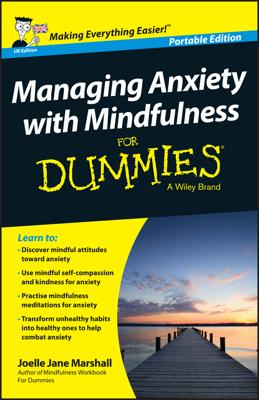Mindfulness is about being in the present moment and letting go of goals. Why think about visions and intentions? Why not just be in the here and now and forget about aspirations? Well, the vision gives you the energy, the motivation and the strength to practice meditation, especially when you really don’t feel like practicing.
For example, your mind may be jam-packed with thoughts and ideas and opinions to such an extent that you can’t easily calm down. Your vision may be to be a calm and collected person, someone who never really worries about things too much, and who others come to for advice.With this in mind, you know why you’re practicing meditation and are committed to sticking at it. This doesn’t mean that the goal of each and every meditation is calmness, and that if you’re not calm you’ve failed – a vision is bigger than that; a long-term objective rather than a short-term goal.
If you’re not too sure of what your vision is, consider coming back to this after doing some mindfulness exercises, which may give you a clearer idea of a vision to work towards. The practice of meditation itself helps to develop an unambiguous vision as you begin to experience some benefits.
Try the following two exercises to help clarify your vision.Write a letter to your future self to develop a mindfulness vision
This is a wonderful way to develop a long-term vision of what you hope to achieve through mindfulness. Reflect on your future self in five or ten years. This is your chance to let go and dream. How would you feel? What sort of person do you hope to be? How do you cope with challenges in your life?Write a letter to yourself about it, or if you’re a visual person, draw pictures. This vision gives your brain something to work towards, and the opportunity to begin discovering a path for you to tread to get there. Pin the letter up on the wall at home, or ask a good friend to post the letter back to you any time in the next year
Most people feel great receiving a letter from themselves dropping through the post, and the self-reflection always seems to arrive at the right time in your life.
Attend your own funeral to develop a mindfulness vision
Try to overcome any reluctance about this exercise, because it’s very moving and powerful. Imagine being at your own funeral service. You’re aware of family and friends around you. Consider each person and imagine each of them saying what you’d like them to say about you. Really hear the positive things they’re saying about you and your life.What do they value about you? What sort of aspects of your personality would you like them to talk about? What have they admired about you? After the exercise, think about it. How did you feel? What did people say about you?
The exercise helps to put things into context and clarifies your values; what’s really important to you. How can you use what was said to create a vision of the kind of person that you want to become? How can that vision help motivate your meditation practice?
Ask yourself the following question every day for a couple of weeks: ‘If today were the last day of my life, would I want to do what I’m about to do today?’ Whenever the answer is ‘No’ for too many days in a row, you know that you need to change something.
Even if you don’t explicitly ask this question, you get a flavor of the value of considering death in order to help you wake up and focus on what’s most important in life.

